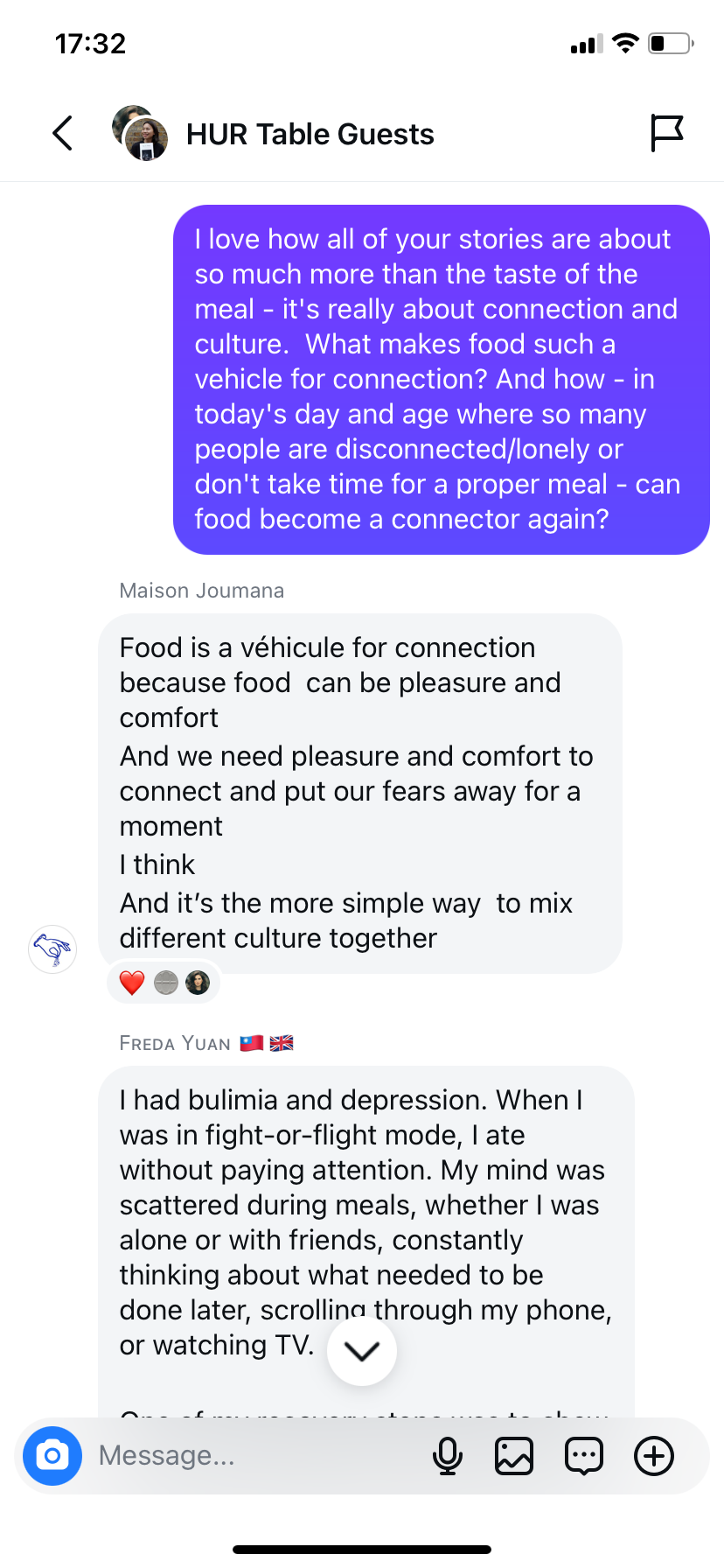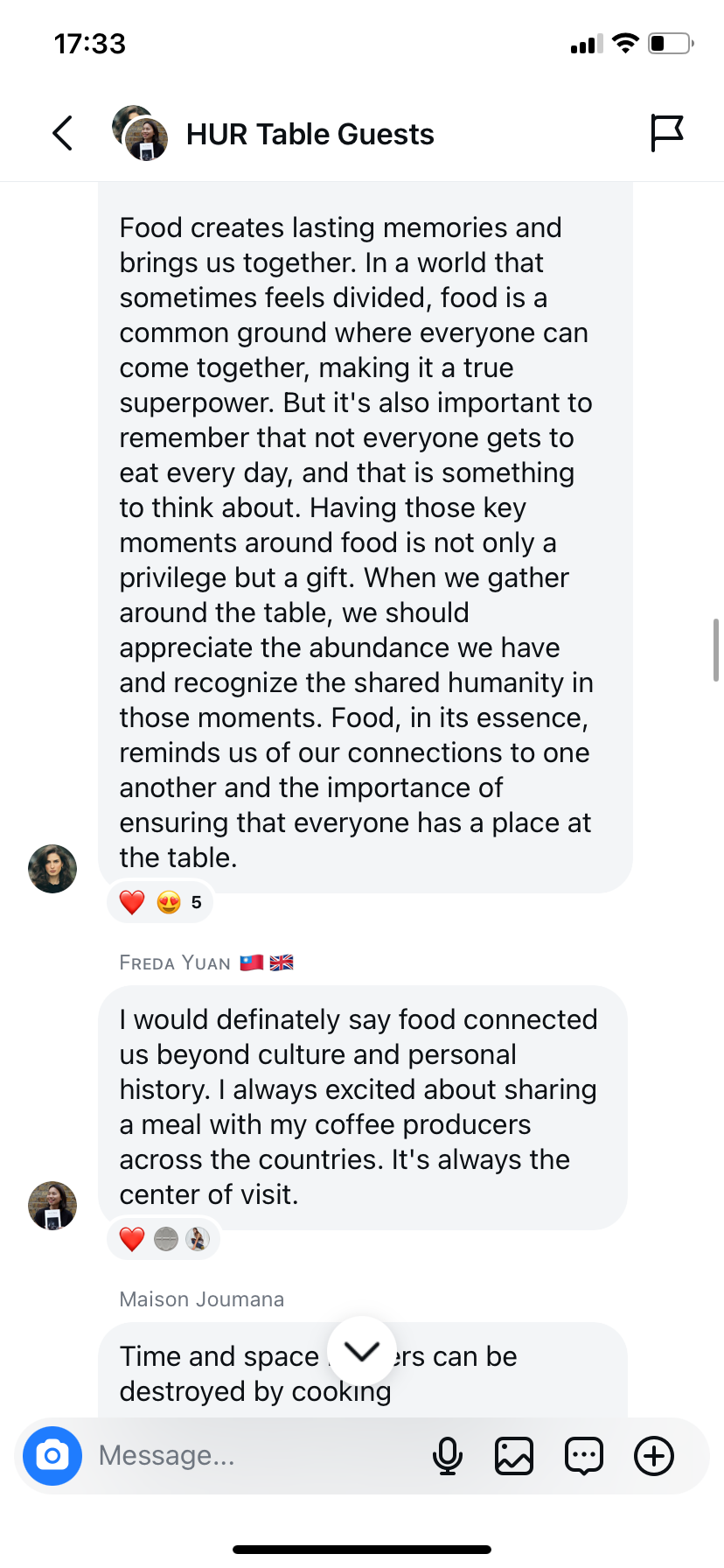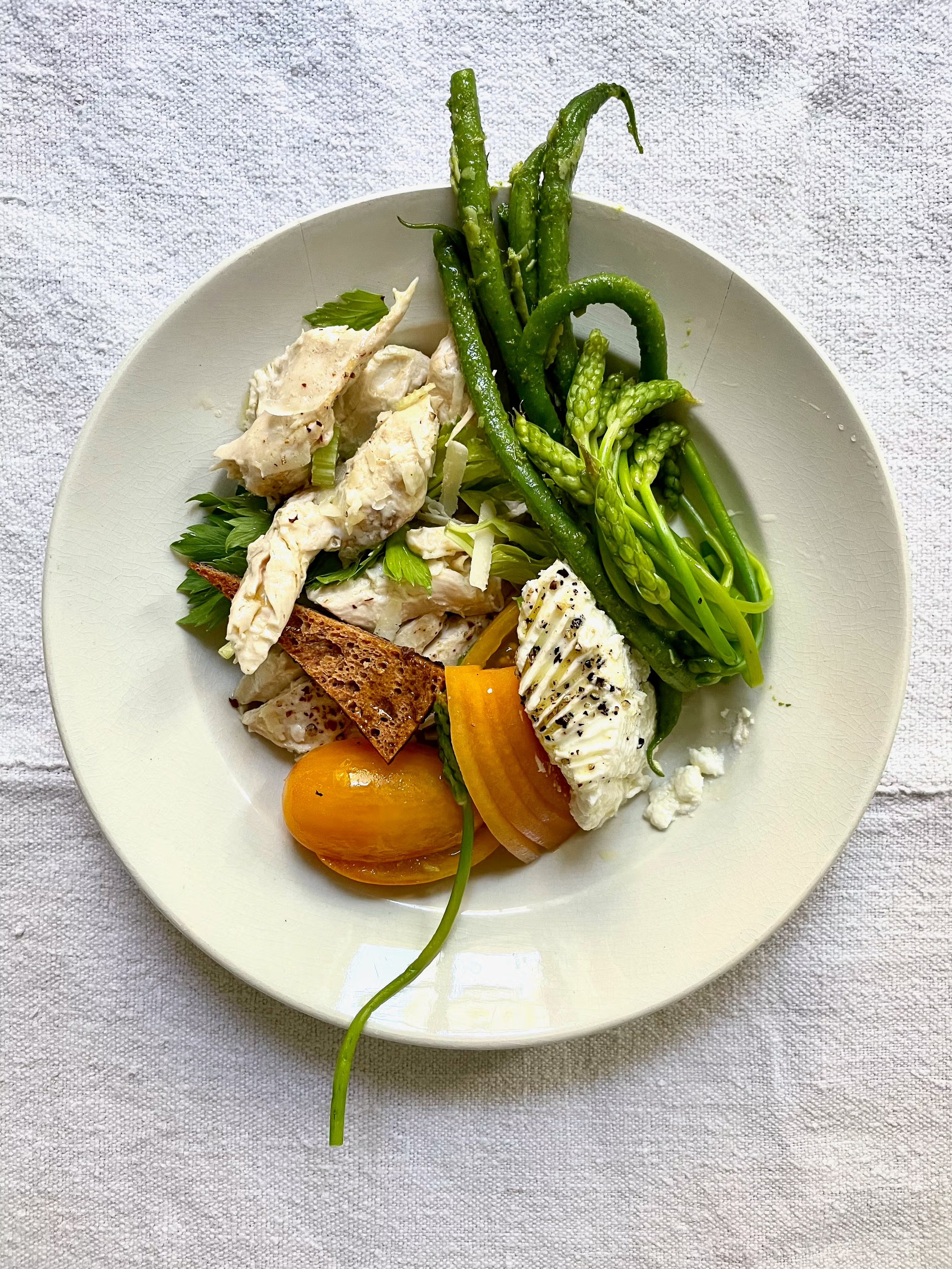In a Disconnected World, Can Food Still Unite Us?
In a Disconnected World, Can Food Still Unite Us?
with Sophie Dalah, Chloé Crane Leroux, Freda Yuan, Sophia Agnella Anita Stolz and Joumana Jacob
By HURS Team
Since the first recipes were carved into tablets nearly 4000 years ago, food has remained a cornerstone of the human experience. Firstly, for survival, but beyond that, food is the ultimate conduit of culture, from passing down recipes from one generation to the next to food rituals practiced with family and loved ones. Food matters.
But in today’s world, the meanings we attach to food have changed. Naturally, many traditions remain, but there’s been a fundamental shift in how we interact with — and the associations we make through — what’s on our plate. We’re inundated with a continuous stream of imagery, videos and information about food. #Food has more than 250 million posts on Instagram, and are seen by users about 18 times a day. 38% of Instagram users look at food content, and 27% of users share food content. From the must-visit restaurants to recipes and health advice. While some of this content connects and inspires, some of it is of a toxic, comparative nature. Additionally, what you eat has become a signifier of much more than what appeals to your palette. With movements like the carnivore and raw vegan diet, food has become a deeper part of our identity, and beyond that a signifier of class and political preference. Making food a tool for division and controversy — Instagram’s algorithms favorite tools for engagement – rather than connection.
What are the dangers of attaching deeper meaning to our food? And how can we ensure that in a disconnected world, food can once again be a tool to connect to ourselves, others and the world around us?
SOPHIE DALAH
Australian-born Chef Sophie Dalah grew up in the food industry. Her career began working as a private chef. Over time, Dalah developed a small and intentional catering company led by creating intimate, family-style experiences inspired by seasonal local produce sourced directly from farmer’s markets. Dalah’s unique cooking style pairs her Jewish Iraqi heritage with her love of Japanese cuisine, creating dishes that are both special and memorable. Her impressive client list spans beauty, fashion, and design, including Thom Browne, Rhode, Saie, and Chateau Marmont, to name a few.
JOUMANA JACOB
Fusing the Mediterranean with Japanese, Lebanese, and French cuisines, French-Lebanese chef Joumana Jacob of Maison Joumana brings her full soul to her food. The Paris-based chef believes sharing a meal creates a deeper meaning and connection between the food, herself, and her guests. Through her sculptural approach to food, Jacob crafts meaningful experiences that are hard to forget. With her signature bread sculptures, Jacob has created a practice that connects with only four humble ingredients: water, flour, rising, and cooking. Her approach to food is classic and simple, but always with impact.
SOPHIA AGNELLA ANITA STOLZ
That cake that doesn’t look like a cake? Sophia Agnella Anita Stolz probably made it. The self-proclaimed cake wizard creates standout cakes for some of culture’s most sought-after brands. From saddle cakes for French luxury house Hermes, wedding cakes for Jacquemus’ wedding campaign to handmade meringue candle holders for Moncler. But Stolz isn’t just limited to creating edible objects for the fashion industry. The cake artist and food stylist creates installations and art pieces that go beyond anyone’s imagination, from working with artist Faye Wei Wei to creating pieces for editorials in Luncheon and T Magazine and making Marina Abramović’s birthday cake.
FREDA YUAN
As the Director of Coffee at Origin Coffee — the leading coffee roastery in the UK — Freda Yuan oversees quality control and ensures that coffee is accessible and enjoyable for all customers. Her career has been deeply rooted in the hospitality industry with extensive experience working in restaurants and cafes. Her commitment to quality and sustainability has always been a central theme in her professional life focusing both on the environmental impact of coffee production but also the relationships with growers and suppliers, ensuring all are treated with fairness and respect.
CHLOÉ CRANE LEROUX
Chloé Crane-Leroux is a New York City-based food and lifestyle photographer, content creator, and recipe developer with a decade of professional experience. Originally from Montreal, Crane-Leroux’s world captures food, style, beauty, and design all through a distinct lens. Led by her passion for plant-based cuisine, Crane-Leroux crafts nostalgic dishes with a modern twist. With her eye for creating engaging content has landed her collaborations with brands like Chanel, Dior, and J. Crew.
We asked five industry insiders about what food means to them, the Instagram effect and how food can deepen relationships.


































